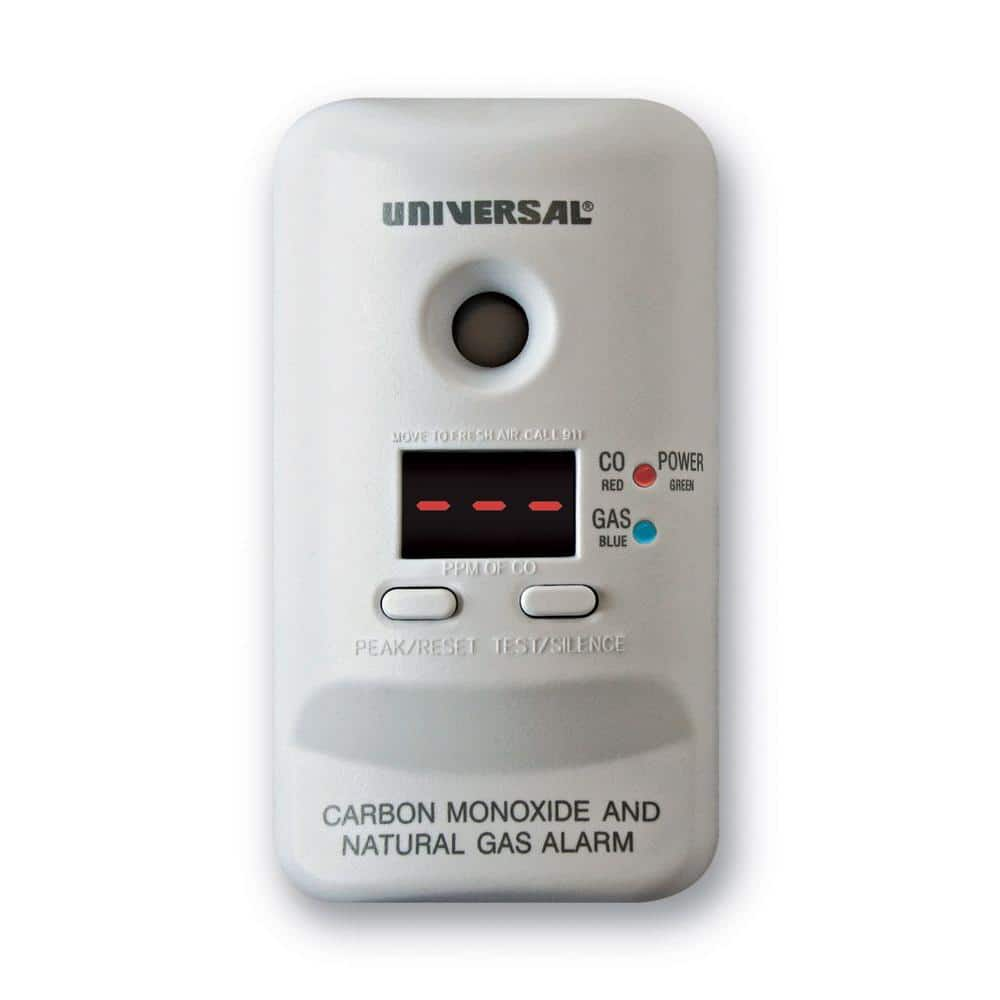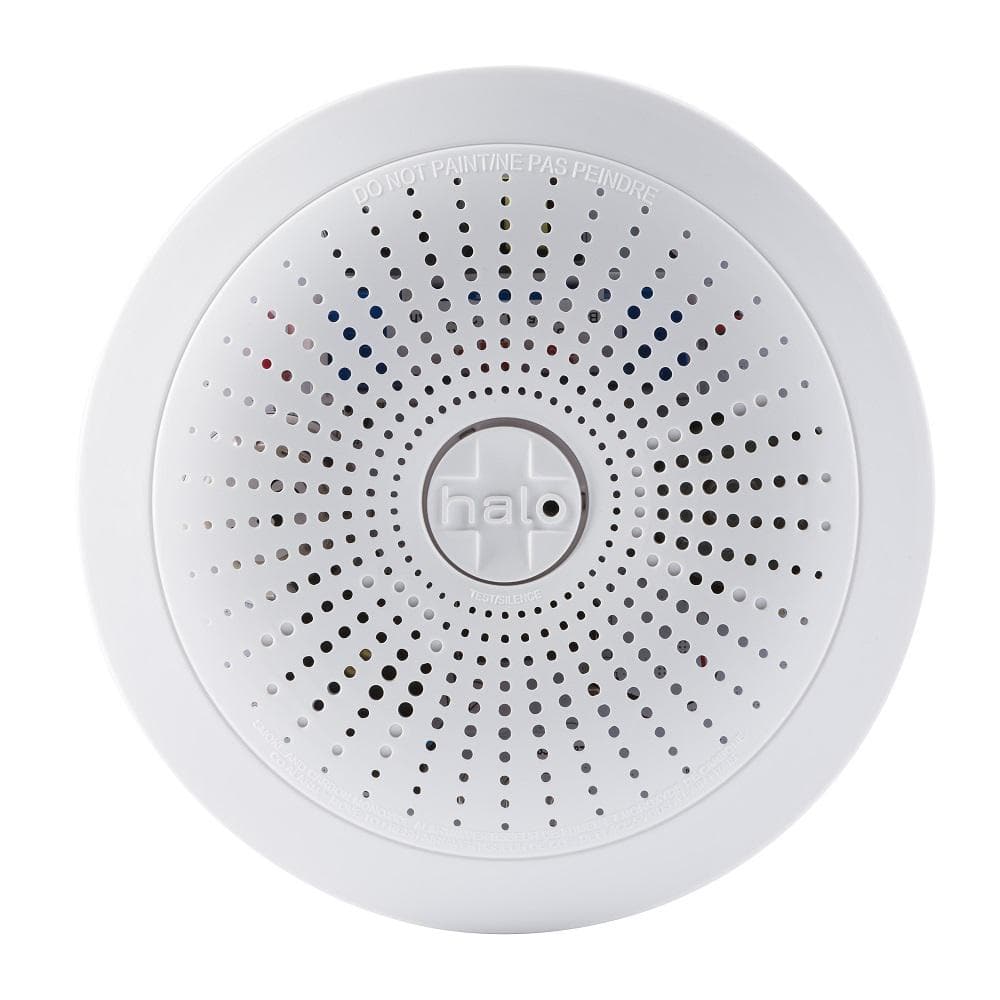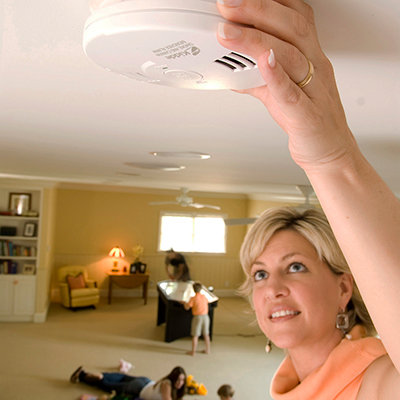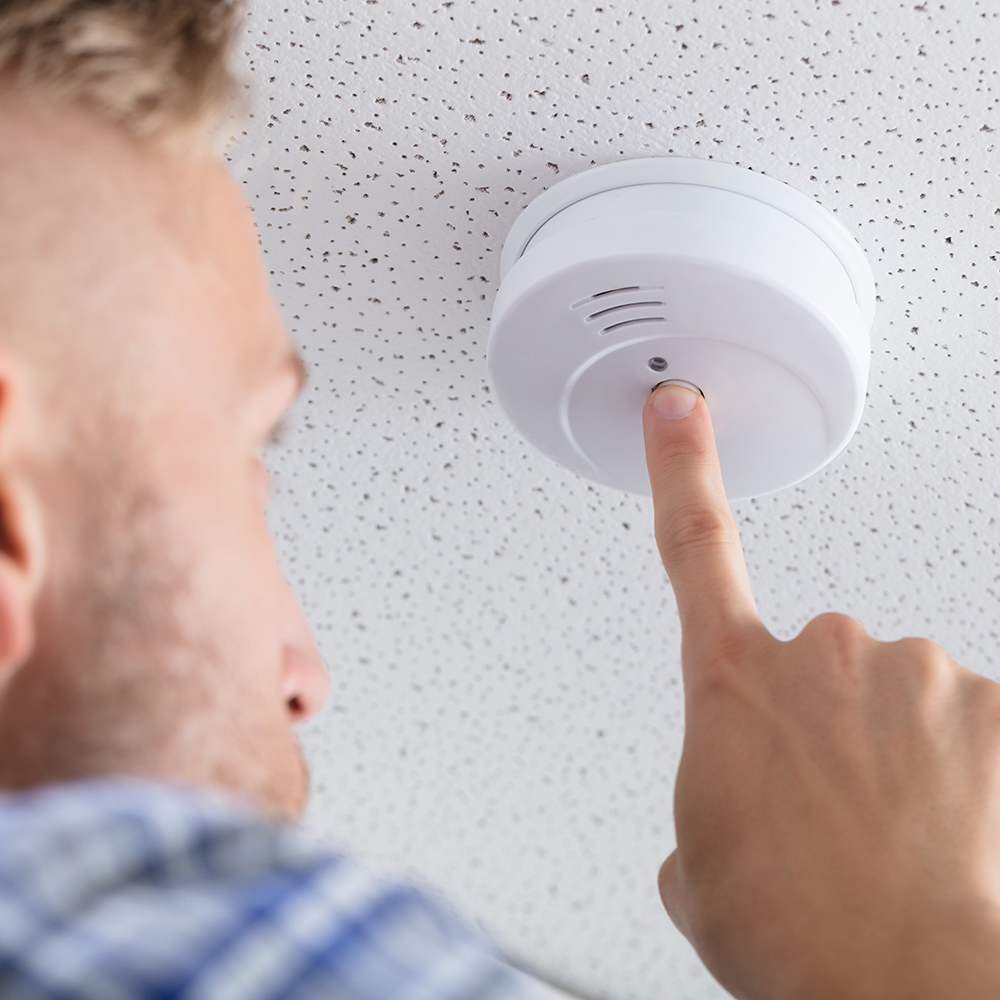Best Carbon Monoxide Detectors
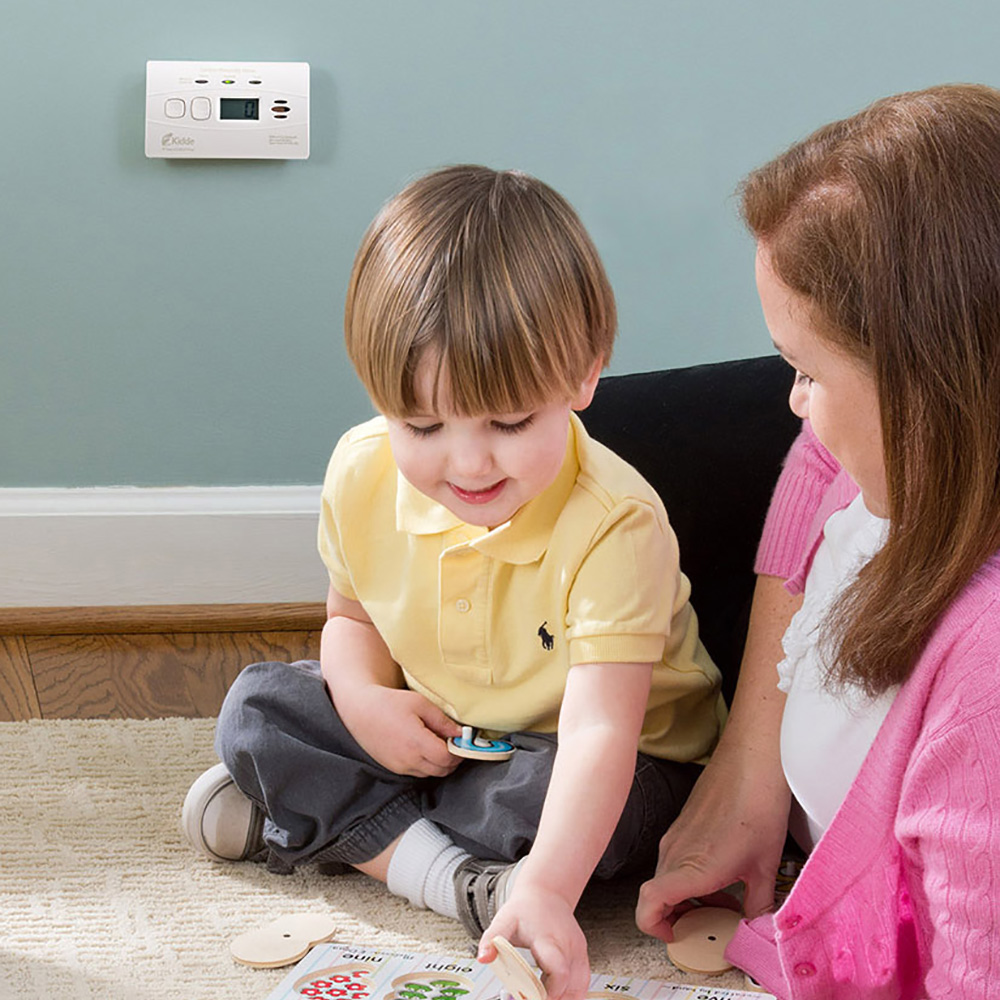
Last updated September 7, 2023
In addition to equipping a home for fire safety, a homeowner should also install a carbon monoxide detector. This guide outlines types of carbon monoxide detectors and some of the features to look for when choosing a carbon monoxide detector to protect your home.
Table of Contents
Do I Need a Carbon Monoxide Detector
Best Carbon Monoxide Detector Installation
Types of Carbon Monoxide Detector Power
Types of Carbon Monoxide Sensors
Carbon Monoxide Detector Features
Do I Need a Carbon Monoxide Detector

A carbon monoxide detector indicates the presence of the gas. Carbon monoxide (CO) is created from the inefficient burning of gas and solid fuel. However, even in homes powered by electricity, carbon monoxide can seep in from outside sources.
Carbon monoxide is dangerous. Large amounts of carbon monoxide in the home can cause suffocation within minutes. At low concentrations, it can still build up in your system. Exposure for more than eight hours can produce a range of symptoms. Continued exposure over time can cause heart and nervous system damage. Because the gas is odorless, colorless and tasteless, it is impossible to sense its presence without a carbon monoxide detector. All homes should have a carbon monoxide detector installed, but most especially if any of its major systems is powered by gas.
Best Carbon Monoxide Detector Installation

It is best to have multiple CO detectors in the home. The best placement depends on your home’s design but there are some general guidelines.
- Have at least one carbon monoxide detector installed on each floor of a home.
- Place one CO detector at basement level.
- Install one detector directly outside each bedroom or sleeping area.
- Place one CO alarm within 10 feet of the garage, if the garage is attached to the house.
There are also guidelines as to where not to place a CO detector:
- Never install a CO detector near any gas appliance. This could produce false readings.
- Keep detectors free of cabinet doors or curtains that could interfere with airflow.
- Avoid windows or drafty areas and direct sunlight.
Do not place CO detectors in humid or moist areas such as bathrooms or laundry rooms. CO detectors should not be placed near the ceiling as you would a smoke detector. Always read the manual and follow all manufacturer’s instructions for safe installation and operation.
Types of Carbon Monoxide Detector Power

- Battery: Battery carbon monoxide detectors are easy to install and are usually an inexpensive option. They will continue working in a power outage, which is one of the most common times that carbon monoxide enters the home. However, since these types of detectors rely on batteries for power, you have to be vigilant about changing them. By the time the low-battery alarm starts beeping, the device may already not be operating efficiently. Most experts recommending changing the batteries twice a year on a schedule, such as when the time changes.
- Hardwired: Hardwired carbon monoxide detectors are considered the top of the line in safety. So much so that some states require interconnected, hardwired detectors in new residential construction. Hardwired systems are linked together so that detecting an elevated level in any room will sound alarms throughout the system. This is important so that you can escape the home before gas in, for example, the garage has had time to reach other rooms where the home’s occupants could be exposed. These systems come at a higher cost, and should be professionally installed, since detector placement will rely on the configuration of your electrical system. If you opt for hardwired detectors, make sure the system has a battery backup.
- Plug-in: Plug-in carbon monoxide detectors are easiest to install. This makes it easy to outfit your home with multiple units. Most come with a battery backup, so they won’t fail in a power outage. However, the placement of most electrical outlets makes them a less ideal choice. CO gases rise, whereas most outlets are knee height, sometimes lower. Being placed close to the floor will make them inefficient.
Types of Carbon Monoxide Sensors

- Electrochemical sensor: This type of sensor offers the most protection. It uses a chemical reaction that creates an electric current. This current then triggers an alarm. They last longer than other types of sensors and operate well across a range of home temperatures. This is considered the best-in-class sensor that offers the most protection for homes when detecting carbon monoxide.
- Metal-oxide semiconductor: This sensor uses the chemical reaction between CO and oxide to monitor carbon monoxide. Most detectors that use this sensor last up to 10 years.
- Biomimetic sensor: Biomimetic sensors use a liquid or gel mixture as a coating that changes color to indicate the presence of carbon monoxide. The average life span of this type of sensor is three years.
- Optochemical sensor: CO sensors with optochemical sensors are the most affordable types of carbon dioxide detectors. Using a color-changing pad, these sensors determine only if there is CO gas present or not. They do not measure specific levels.
Carbon Monoxide Detector Features
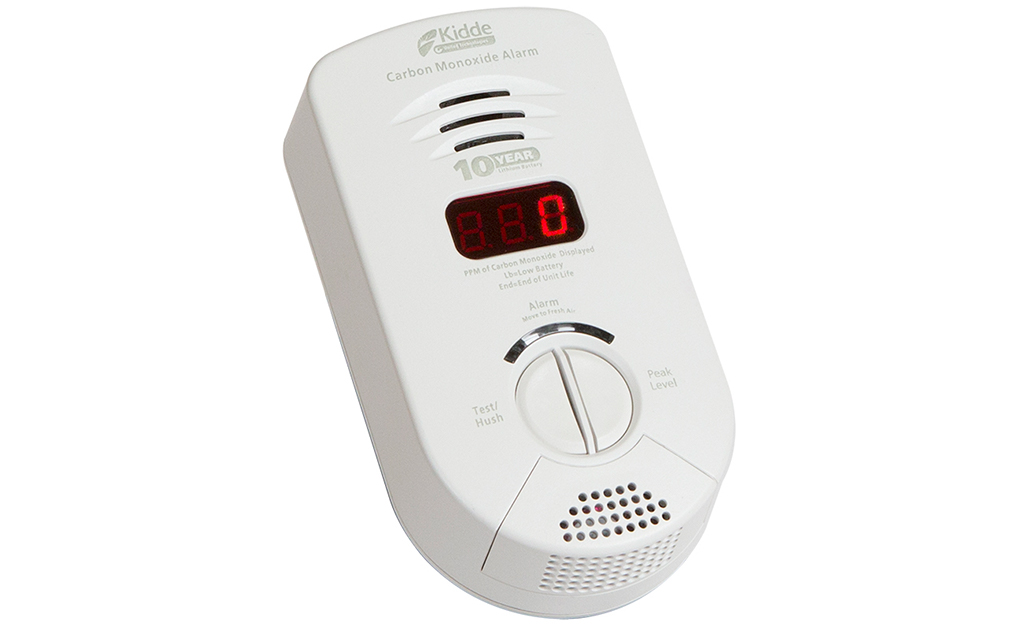
- Smoke and CO Detection: This all-in-one feature combines a CO sensor and smoke sensor in one device and on the same power source.
A smoke and carbon monoxide detector issues separate alerts for each type of event. - Smart technology: CO alarms with smart technology help you monitor even when you are away from home. Smart CO detectors connect to your smartphone with a mobile app and allow you to receive alerts and control the device remotely.
- Digital display: Make it easy to read CO levels and track changes more quickly.
- Temperature-adjustment: CO detectors with alarms that adjust for temperatures often limit nuisance alarms. In the event of humidity or fluctuating temperatures they accurately measure carbon monoxide levels.
- Clock alarms: This type of alarm triggers different sounds based on the parts per million (PPM) of gas in the environment and the estimated amount of time you have to evacuate. For example, at 50 PPM a clock alarm will typically give 60 to 90 minutes to evacuate.
Safety: CO levels can rise quickly, so it is important to evacuate as soon as an alarm is triggered.
Once you have decided on the types of carbon monoxide detectors that are best for your home, be sure to purchase enough to cover every floor of your home, install them according to recommendations and maintain the power source to ensure that the systems keep working. CO gas is a very real danger and protection is well worth the investment.
Ready to find your carbon monoxide detector? Shop online, The Home Depot delivers online orders when and where you need them.
